Vents vulnerabilities
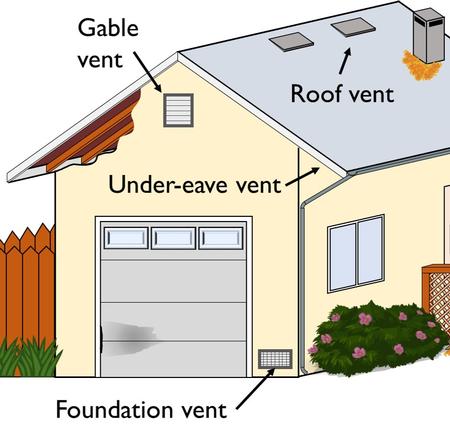
In attics and crawl spaces, vents provide air circulation to prevent moisture buildup while keeping rodents and small animals out. However, depending on the mesh size and type of screen, small materials may pass through vents and deposit in enclosures. During a fire, embers can also penetrate the vents. Once inside the house, embers can easily ignite combustible materials and structural components, and the house will appear to burn from the inside out.
Common vent locations
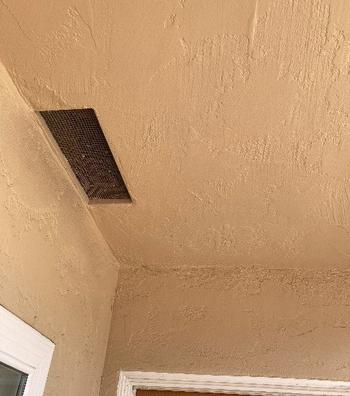
|
Soffit vents. Usually located under the eave of the roof. Vegetation or other combustible materials near the exterior walls could directly expose these vents. |
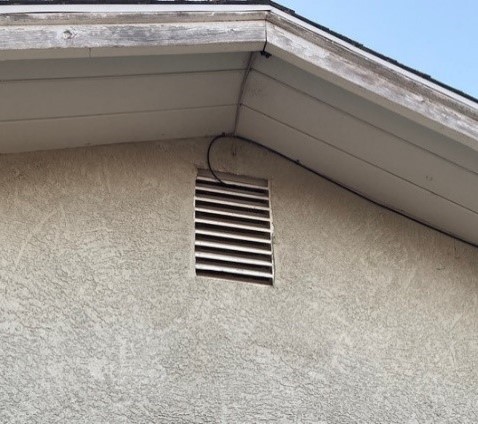
|
Gable vents. This common type of vent serves both as an intake and exhaust vent and it’s installed on opposed sides for cross-ventilation. Traditional vents could expose the attic to ember ignition. |
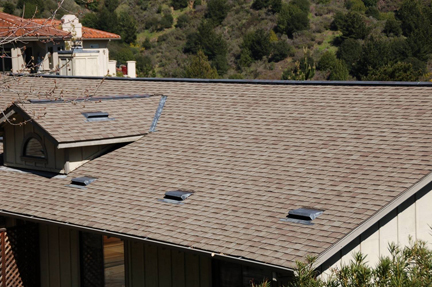
|
Ridge vents. Leaves and debris usually do not accumulate by the ridge of the roof. However, traditional vents have plastic components that could ignite or melt when exposed to flames or embers. |
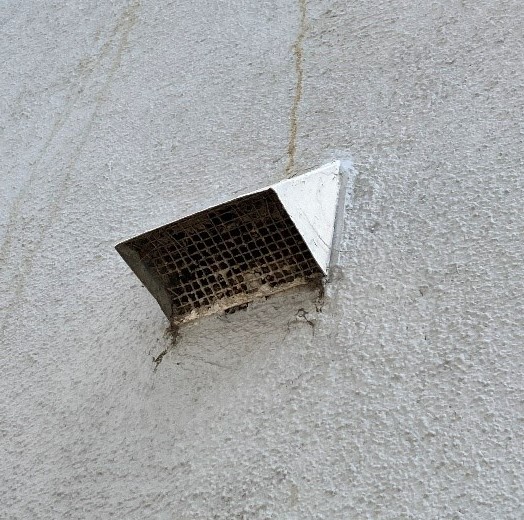
|
Dryer/garage vents. Lint or other debris in the vicinity of these vents (both inside and outside) could easily ignite in contact with embers. |
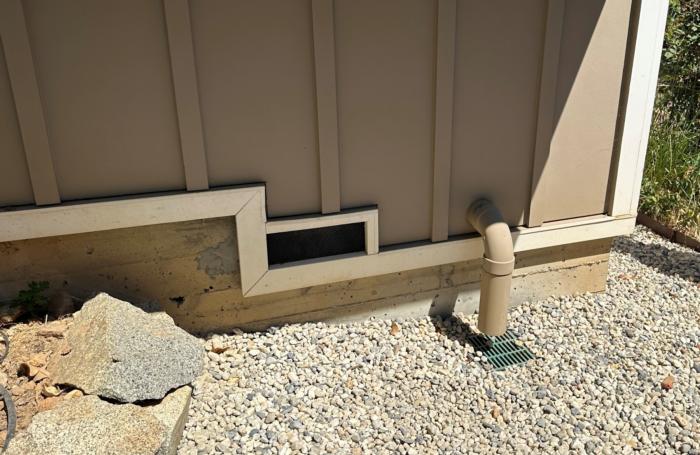
|
Foundation vents. These vents are usually on the lower section of exterior walls. The area in proximity of the vents should be free from vegetation and other combustible materials. |
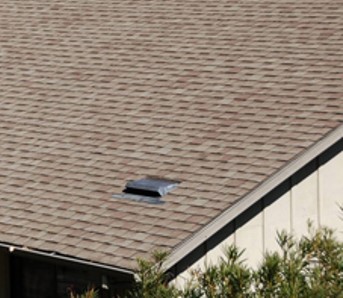
|
Roof vents. These vents are very vulnerable to ember entry and could directly expose the attic, especially if they face upcoming wind. |
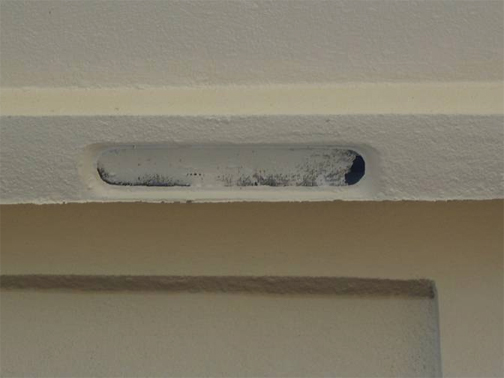
|
Vent clogged by paint. Embers passing through 1/4'' mesh screen have sufficient energy to ignite fine fuels. Finer mesh screens would reduce the risk of ignition (smaller embers would have less energy). However, they may become clogged with debris or paint, negatively impacting the moisture management function of vents. |
How can you protect your vents?
The first step is to locate all vents on your property (attic, crawl space, laundry room, etc.) and determine whether they need immediate attention:
- Is the mesh screen larger or equal to 1/4” (6.4 mm)? Large embers would be able to easily pass through them
- Is there any vegetation or combustible material within 5ft (1.5m) from the vents? When burning, they may generate flames and embers that would directly impinge on vents
- Does the mesh screen have debris and/or paint clogging it? As a result, they would not be effective in removing moisture, and debris may burn in contact with a flame
Traditional vents should be retrofitted or upgraded to improve their fire resistance. Vents can be retrofitted by installing metallic screens with a mesh between 1/8” and 1/16” (depending on air ventilation requirements). If possible, replace your vents with fire-resistant vents approved for use in high-fire risk areas. A list of these vents is provided below (this list is not intended to endorse any particular brand or product). Vents should be checked regularly, and vegetation and combustible materials should be kept away from their immediate surroundings.
If you have not been able to replace or improve your vents before a fire approaches your area, use plywood or metal tape to temporarily cover the vents before evacuation if time permits.
Fire-resistant vents
Here are a few examples of fire-resistant vents. We will try to update this list on a regular basis.
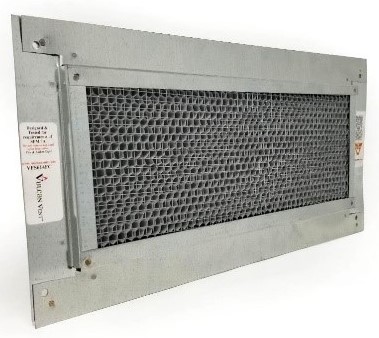
|
Vulcan vents. They use screenings on the front and back of a honeycomb matrix. This matrix is coated with an intumescent paint that swells when exposed to heat. |
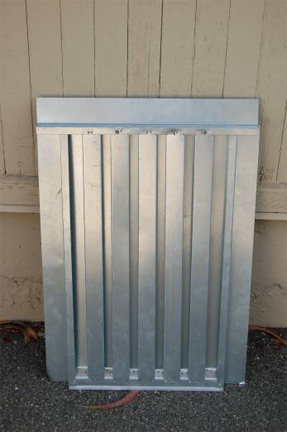
|
Brandguard vents. These vents use a baffle design to deviate the embers path. |

|
Embers out. These vents have multiple internal layers of louvers that block embers. |
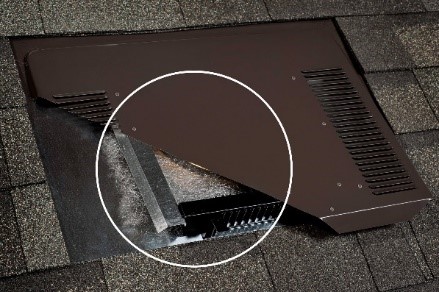
|
O’Hagin’s vents. Low profile through-roof vents, approved for over eave applications. |
California regulations
According to Chapter 7A, screen mesh for roof vents should be made with corrosion-resistant and non-combustible materials, with openings between 1/16 and 1/8" (1.6 and 3.2 mm). In addition, Chapter 7A prohibits the use of vents in eaves unless they have proven to resist the intrusion of embers and flames.
Products and assemblies that have complied with Chapter 7A can be found in the WUI Product Handbook. Since “ignition resistant” and “non-combustible” are performance-based characteristics (i.e., there is a standard test to show compliance), these materials are included in the Handbook.
Check out these additional wildfire preparedness resources from UC ANR Fire Network Members and our colleagues!
Vents
Home hardening